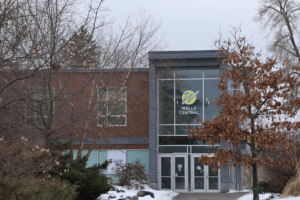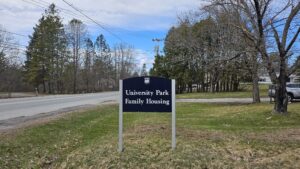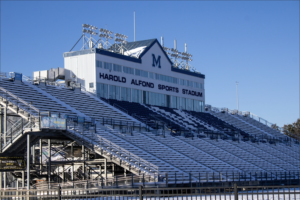Here’s a mantra potentially forgotten in the midst of the University of Maine’s quest to draw in more and more students: quality over quantity. Eventually, the school will need to reconcile the tensions between larger incoming classes and shrinking campus availability.
Keeping students at the university is just as, if not more, important than bringing in more of them. Having larger first-year classes matters very little if scores of them leave after their first few semesters. According to the university’s Office of Institutional Research, the institution-wide first-year retention rate has been slowly declining from 2013 to 2016, dropping from 77 to 75 percent retention. After four years, the retention rate was a modest 60 percent of students in 2013. This accounts for both graduating students and continuing students.
There are endless reasons why someone may end their enrollment at UMaine. These lost students may be stopping their pursuit of a degree, facing personal or emergency situations or transferring to different schools. Many of these factors are out of the university’s hands. But there’s something to be said about creating a community where students want to stay and commit to their degree. The first step in making a successful community is having space — this is where the campaign for bigger classes collides with the physical limits of our campus.
Since UMaine requires nearly all first-year students to live on-campus, it follows that the campus should have ample rooms available. This hasn’t been the case since the college has taken in larger classes. Several dormitories now require triples — those stereotypical “college life” vibes don’t mean squeezing three students into one tiny room for a year. While UMaine accepts more out-of-state students along with its increased class sizes, the necessity for having reliable housing on campus is especially critical.
The ages-old parking shortage is again relevant in these discussions. As more students join the UMaine community, more cars will be driving the roads and filling the limited parking lots faster than before. Since the community surrounding UMaine isn’t highly accessible by public transit, having a vehicle is a perk that many first-year students will find appealing, and will pursue. With no proposed amendments to parking privileges or lot renovations, the future for parking access isn’t bright.
Beyond residence life, there’s a noticeable lack of attention to academic spaces. The UMaine campus has lovely buildings — the Memorial Union and Fogler Library are two incredible spaces with countless resources and gathering spots. But how about what students came here for? Namely, their classes? The state of academic buildings on campus is varied, but errs on the side of needing renovations. Ensuring that every classroom is accessible and well-maintained is the least the university can do for its students. Some buildings have needed repairs for years. Even cosmetic renovations matter. Most students would rather go to class in a well-maintained room, rather than one with peeling paint or stained ceilings. These are small things that speak to the overall feel of campus: something that can make or break a student’s experience, and change their mind about staying at UMaine.
Watching the UMaine community grow and bring in record-breaking classes is admirable, but exposes tensions on campus when the overall mission seems to grow too narrow. Accepting students is one goal which should be balanced against the others. We can only squeeze so many first-year students into campus before we must address the shrinking space around us, and figure out where we’ll go from there.



